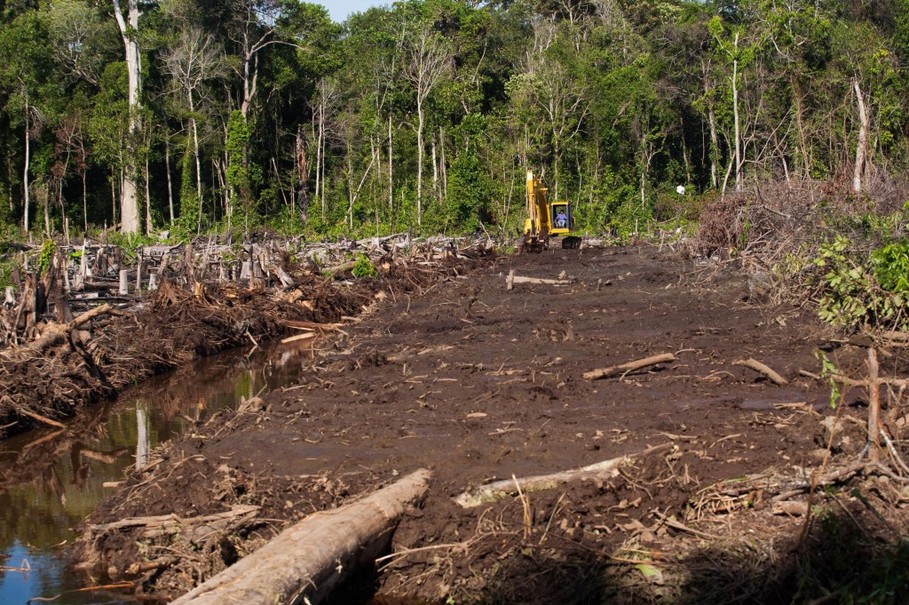Preferring to supply technical assistance and guidance rather than financial support, London-based Climate and Development Knowledge Network is one of the many organizations assisting Indonesia with its climate change mitigation and adaptation measures.
CDKN’s chief executive Sam Bickersteth, however, thinks deforestation efforts in Indonesia have garnered a lot of attention already.
His organization therefore is mostly focusing on other areas that have largely been untapped — including renewable energy and climate finance.
Bickersteth sat with the Jakarta Globe last week during a brief visit to Jakarta to talk about these issues, including the upcoming United Nations’ climate change conference (COP) in Paris.
Q: Why is renewable energy one of your organization’s focus areas in Indonesia?
A: In case of Indonesia, clearly how forests and land use are managed is the biggest issue in the short and medium term. But that has received a lot of attention from a lot of international organizations. And our focus is being in a number of areas less related to that.
Energy is one issue. In smaller islands and remote areas, a large proportion of the population don’t have access to energy.
It seems to me that growing renewable energy — solar, geothermal and wind and other climate compatible sources of energy — is a huge opportunity for Indonesia, rather than relying on coal, which ultimately is not the long term solution for energy sources.
So we’ve been working with the Energy Ministry in trying to plan and create conditions for better investment in renewable energies.
I would highlight that in international media quite a lot of attention has been paid to the fuel subsidy reform in Indonesia, which has potentially huge and significant effects on emissions [and] more efficient use of fossil fuel.
We’re [also] doing some work around land use. Our third focus area is around what is called climate finance — attracting international and domestic finance to climate-related areas.
Indonesia was a pioneer in setting out a national climate change fund, the ICCTF [the Indonesia Climate Change Trust Fund]. And we’ve been working with that unit.
Will Indonesia will be able to afford the technologies? What is important about renewable energy is finance. It’s not really a question about technology actually; a lot of technology is available. It’s about access to the money to pay for it.
And I suspect the thing that is not in place in a number of countries is a financing mechanism, whether it’s public or private.
And ultimately the solution for climate change is going to come from private investors. [Existing] international climate funds in Indonesia [are expected] to catalyze the flow of private money into renewables.
How should the climate finance work?
In the United States and in Europe, the governments create tax incentives and [other policies]. But most of the finance is private finance, which comes from pension funds and private investors.
It’s a combination of sound government policy and incentives, plus public and private finance that will transform the energy scene in Indonesia.
So your banks — public and private — investment agencies, the bond market, the stock exchange; what are they doing about transition to low carbon? We need to talk to the right people.
Presently we talk to the ministry, we’re talking to NGOs, we’re talking to universities. We should be talking to the bankers and that’s a big shift that has to happen.
We have to communicate differently, we have to help them understand that it’s an opportunity, not a threat. That’s a huge opportunity to make that transition. The technologies are there and available, and often available at a better price.
But the point about renewables is all your costs are [paid] up-front. If you buy your coal, you’re paying as you go along and you get your income to match.
With renewables you have to build nearly all your investment at the front, and you wait for your payback. The only solution is a good banking arrangement, long term. Bankers have long-term visions. So I really think the constraint is often much more in the financial area rather than technology.
There remains skepticism about the next much-anticipated COP meeting in Paris. What do you think the result will be?
I think globally what the world needs is a fair and ambitious deal that keeps us within the safe limit of 2 degrees of additional warming on average across the globe — from historic [pre-industrial] level of global temperature.
It’s a very important meeting, the most important global climate change meeting since the one held in 2009 in Copenhagen [producing the Copenhagen Accord].
It is hugely complex, 190 countries are negotiating over a huge range of topics — from access to finance, technology, knowledge, support on adaptation.
The question is, will it provide a mechanism to push us to reach it over time? We’re not going to agree this December [in Paris] on how exactly we’ll get to meet global net carbon neutrality by the end of the century.
We need to globally meet carbon neutrality, which is an enormously large challenge. But it is achievable.
Source: Jakarta Globe














